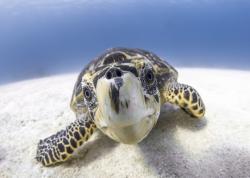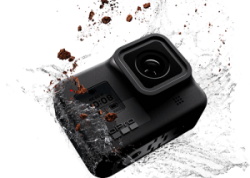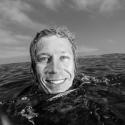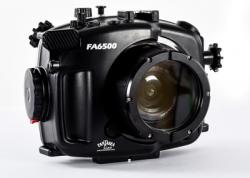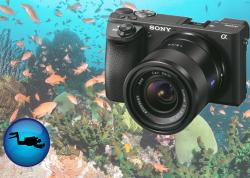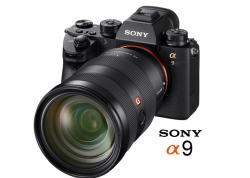3 Tips for Better Underwater Macro
Underwater macro photography takes us deep inside the reef, exploring the nuances of a complex, symbiotic ecosystem that many divers swim right past. The inhabitants of this world display the shapes, colors, patterns and textures that inspire even the most radical of sci fi junkies, and it's our priviledge to document those critters and show them to the world.
There are many macro diving hotspots in different corners of the globe, each with a deep lineup of photo-friendly critters. It's easy to pause, snap a photo and then move on. But is that the best photo you could have taken? Are you making the most of that expensive camera gear?
Below are three tips for shooting better macro photos. The first two will bring the best results from your gear while the third helps make photos a bit more engaging.
Shoot at Minimum Focus Distance
Most macro lenses (or built-in lenses on compacts) have a wide range of focus, and it's easy to simply point the camera at the subject and push the shutter. By inching the camera forward, you will keep focusing at a closer distance - at least until you reach that minimum focus distance. This will create a crisper image since there is less water between port and subject, will fill the frame more, and create more depth in your image. If you've joined me on a photo workshop, you may still hear my voice in your head saying get it right in the camera and try not to rely on cropping!
On the flip side, some larger subjects must be shot from farther away, and some tiny subjects may require some cropping. But in general, try to shoot at the minimum focus distance.
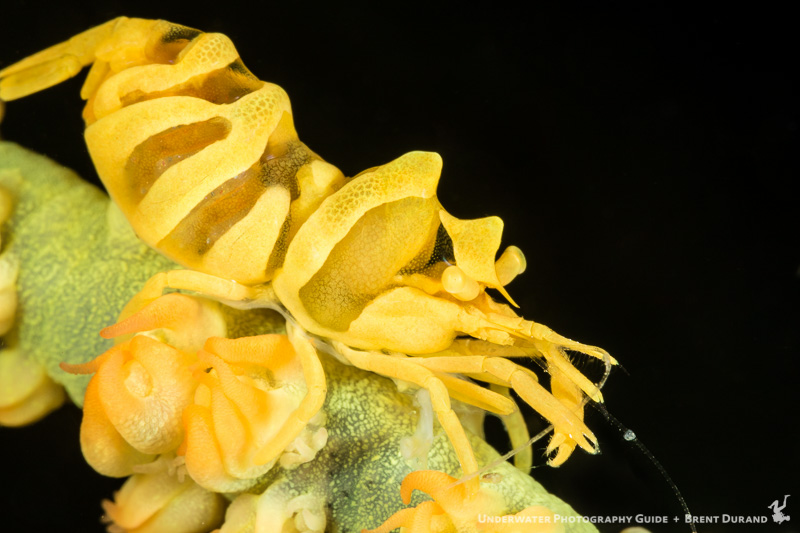 This whip coral shrimp fills the frame at the minimum focus distance. Shot in Anilao, Philippines with Canon 7D Mark II and Canon 100mm macro lens.
This whip coral shrimp fills the frame at the minimum focus distance. Shot in Anilao, Philippines with Canon 7D Mark II and Canon 100mm macro lens.
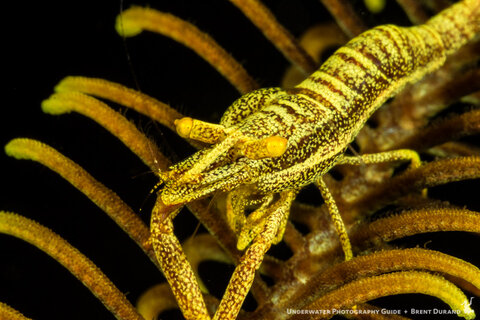
We see crisp detail on this crinoid shrimp shot at the minimum focus distance. Anilao, Philippines with Canon 7D Mark II.
Reposition the Focus Box
We all probably know that critical focus on the subject's eye is paramount in capturing an intriguing macro photo... unless you're shooting a nudibranch! There are two ways to achieve this. The first is to leave that focus box in the center, focus on the eye, and then recompose the image before pushing the shutter the rest of the way down. This is fine for some situations, but isn't ideal when you have a brief moment to capture a macro critter in just the right position. As you move the camera there are several variables subject to change: distance to subject, habitat movement, shadows & strobe position.
When we move the focus box to the point in the frame where the eye (or rhinopore) appears, we can push the shutter in one movement, eliminating the movement of the variables above and capturing a sharper image.
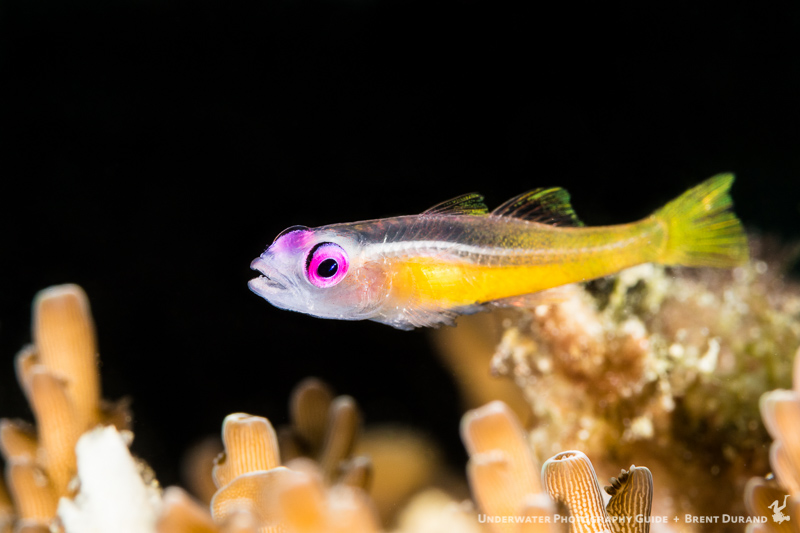
A pinkeye goby swims just above some coral. While close to center, I made sure to position the focus box right where the closest point of the eye would appear in the frame. Shot in Anilao, Philippines with Canon 7D Mk II.
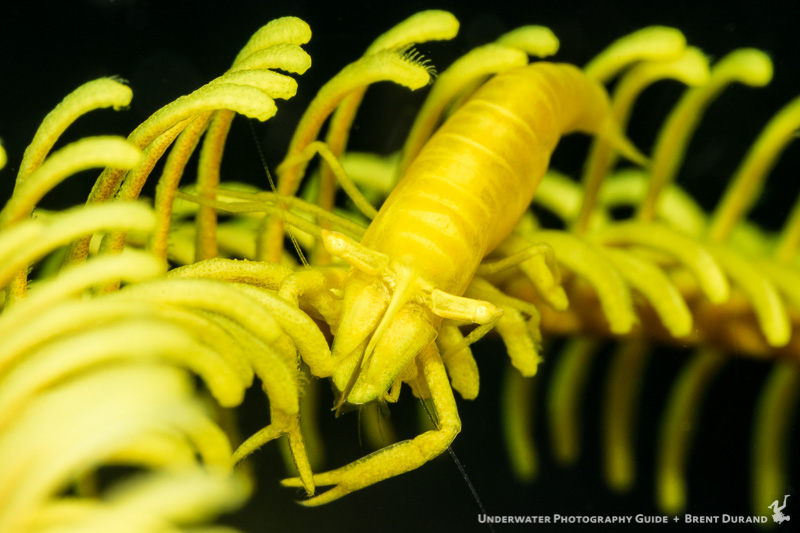
Shooting a crinoid shrimp is often a fast endeavor since the crinoid continues to move its arms once disturbed. By placing the focus point precisely where I wanted it in the frame, I could press the shutter the second everything looked right.
Tell a Story
Photojournalists are constantly striving to tell a story in a single image, and I believe this translates well into macro photography. Telling a story with the image doesn't always need to fall into the 'marinelife behavior' category either - something like swimming can tell a story but isn't very interesting behavior (unless you really, really like swimming!).
Try to find something unique about your subject and how it interacts with the environment around it and you'll find yourself shooting a more engaging image that people spend more time viewing.

A juvenile spotted sweetlips moves fast, erratic patterns around it's home. Slowing down the shutter allowed me to capture some motion blur, portraying this fast movement.

This porcelain crab is sitting on the top of a soft coral at night, moments away from releasing eggs. By clearly including the eggs and soft coral polyps in the frame, we spend an extra moment with the photo to absorb the scene.
These tips for underwater macro photos apply to any type of camera in many different macro shooting situations. You can always practice on land before your next dive trip so that you maximize your time shooting in the water, or join one of our workshops for a week of intensive photo instruction. Be respectful and have fun out there!
RECOMMENDED ARTICLES
SUPPORT THE UNDERWATER PHOTOGRAPHY GUIDE:
The Best Service & Prices on u/w Photo Gear
 Visit Bluewater Photo & Video for all your underwater photography and video gear. Click, or call the team at (310) 633-5052 for expert advice!
Visit Bluewater Photo & Video for all your underwater photography and video gear. Click, or call the team at (310) 633-5052 for expert advice!
The Best Pricing, Service & Expert Advice to Book your Dive Trips
 Bluewater Travel is your full-service scuba travel agency. Let our expert advisers plan and book your next dive vacation. Run by divers, for divers.
Bluewater Travel is your full-service scuba travel agency. Let our expert advisers plan and book your next dive vacation. Run by divers, for divers.




